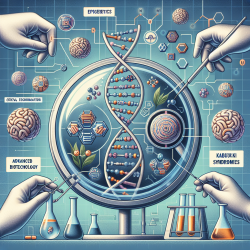Introduction
As a Special Education Director, staying abreast of the latest research is crucial for enhancing the educational experiences of students with Autism Spectrum Disorders (ASD). A recent study titled "Response of neural reward regions to food cues in autism spectrum disorders" provides valuable insights into the neural reward responses in children with ASD, offering potential pathways for improving therapeutic interventions.
Understanding the Study
The research explored how children with ASD respond to primary rewards, such as food cues, compared to typically developing children. The study involved 17 children with ASD and 18 without, who were exposed to images of high-calorie foods after a period of fasting. The researchers measured the neural reward network's response using MRI scans, focusing on the blood oxygenation level-dependent (BOLD) signal.
Key Findings
The study revealed that children with ASD exhibited a stronger neural response to food cues in certain brain regions, such as the bilateral insula and anterior cingulate cortex, compared to their typically developing peers. This suggests that the neural response to primary rewards is not diminished in children with ASD but may be aberrantly enhanced.
Implications for Practitioners
These findings have significant implications for practitioners working with children with ASD:
- Personalized Interventions: Understanding the heightened response to primary rewards can help tailor interventions that leverage these neural pathways, potentially enhancing engagement and motivation in therapy.
- Alternative Reward Systems: Practitioners might consider incorporating primary rewards, like food, into therapeutic settings to better align with the natural reward responses of children with ASD.
- Further Research: Encouraging further exploration into the neural reward systems can lead to more comprehensive strategies that address both social and non-social reward processing in ASD.
Encouraging Further Research
While this study provides a foundational understanding, it opens the door for further research. Future studies could explore the integration of social and non-social rewards, investigate the role of other primary rewards, and assess the long-term impacts of utilizing these insights in therapeutic settings.
Conclusion
The study "Response of neural reward regions to food cues in autism spectrum disorders" offers a promising avenue for enhancing therapeutic approaches for children with ASD. By understanding and leveraging the unique neural responses to primary rewards, practitioners can create more effective and engaging interventions.
To read the original research paper, please follow this link: Response of neural reward regions to food cues in autism spectrum disorders.










